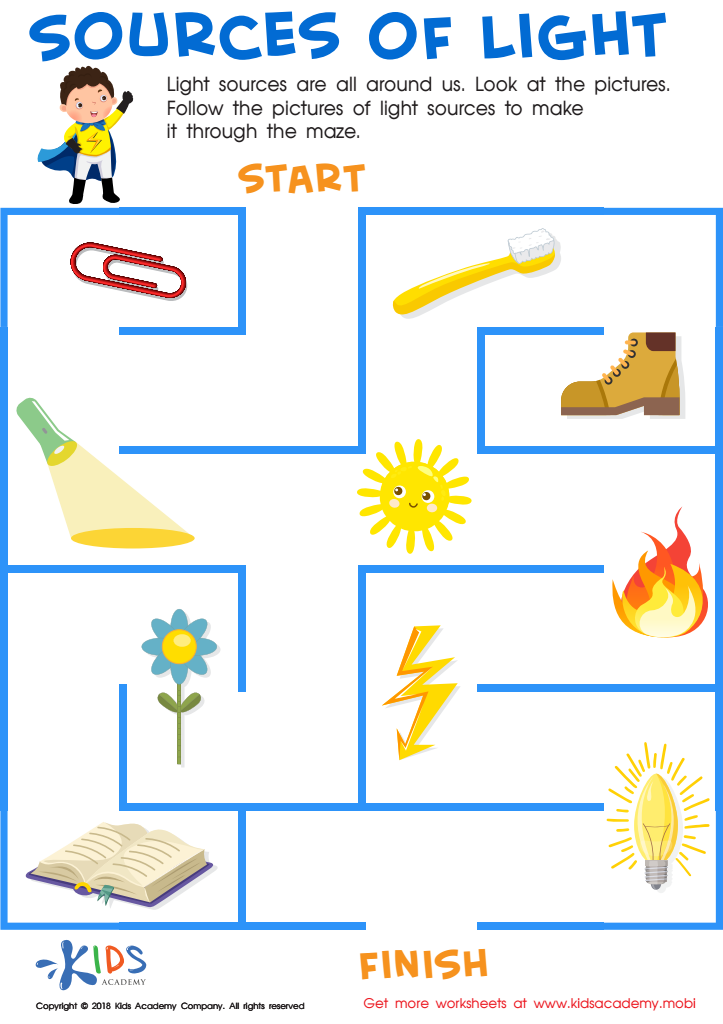Differentiating natural/artificial light Worksheets for Kids
1 filtered results
-
From - To


Sources of Light Worksheet
Question/Answer
How does the mastery of the Differentiating natural/artificial light skill affect a student's performance at an early age?
Mastery of differentiating between natural and artificial light at an early age can enhance a student's observational skills, understanding of the environment, and awareness of light sources. This skill can positively impact learning in science, art, and health by facilitating more nuanced observations and inquiries about the natural world, light properties, and their effects on human well-being and ecosystems.
Why is the Differentiating natural/artificial light skill important for Grade 1 students?
Differentiating between natural and artificial light is important for Grade 1 students because it lays the foundation for understanding basic science concepts, such as sources of light, energy, and the natural world. This skill also helps in fostering observation and critical thinking abilities, as students learn to observe their environment and categorize different types of light.
How to test a Grade 1 student’s Differentiating natural/artificial light skills?
To test a Grade 1 student's ability to differentiate between natural and artificial light, present them with various images or actual objects that emit light, such as the sun, candles, fireflies, light bulbs, and flashlights. Ask them to categorize each source as either natural or artificial.
 Assign to the classroom
Assign to the classroom












